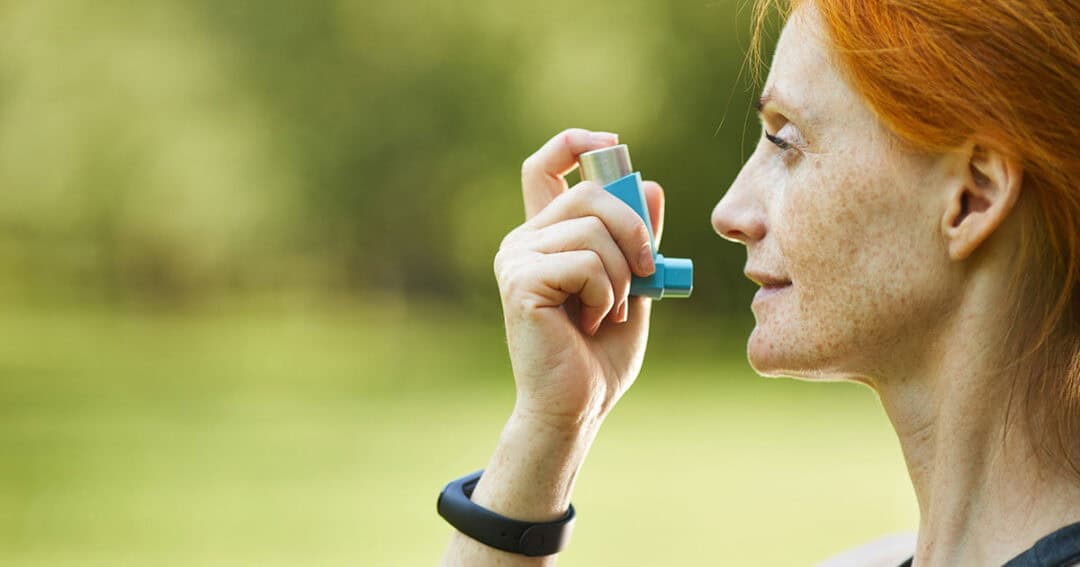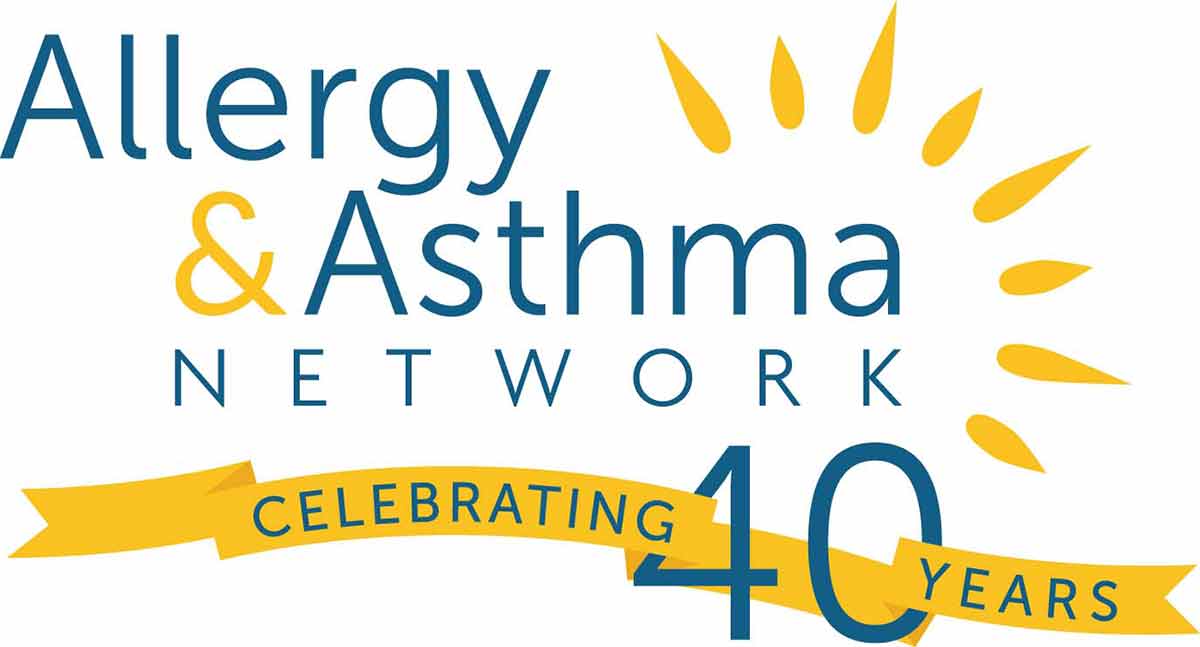Summer Asthma and Warm Weather
Published: June 9, 2025

People often ask: “Does summer make asthma worse?” or “Why is my asthma worse in the summer?”
Some people with asthma may experience fewer symptoms and flare-ups during the summer. But others may experience an increase in asthma symptoms, leading to full-blown summer asthma attacks.
Hot and humid weather and exposure to pollens, mold spores and air pollution can cause asthma symptoms to flare. Warm weather activities such as playing sports, exercising and camping can also lead to increased respiratory problems.
Let’s explore some causes of summer asthma, identify common triggers and learn summer asthma tips to avoid flare-ups.
Does asthma flare up in summer?
For people with seasonal allergic asthma, summer is when symptoms tend to improve. In many areas of the United States, there are fewer triggers, such as respiratory viruses and cold, dry air. More time is spent outdoors, so there is less exposure to indoor allergens that can trigger symptoms.
For others, summer heat and allergies can affect asthma. Heat and humidity from summer weather can make breathing difficult for people with asthma. Summer months also increase exposure to different triggers such as tree, grass or ragweed pollen, thunderstorms, campfires and air pollution.
If you’re concerned about having a summertime asthma attack, talk with your doctor about adjusting your Asthma Action Plan during summer months.

What are the causes of summer asthma?
Hot weather can make asthma worse. This is because high temperatures and humidity can cause the airways to tighten and become narrower, making it harder to breathe for people with asthma.
Heat also increases the risk of air pollution. It traps ozone and particulate matter from cars, trucks and other sources. When in the air, these pollutants can be easily inhaled and cause asthma symptoms.
Also during the summer, the air may not circulate well. The air may become stagnant. This can trap pollens, dust, mold and pollutants. These are potential triggers of allergic asthma.
It’s usually best to keep the indoor temperature between 68°F and 71°F. Keeping the humidity between 30% and 50% can also help. If you live in a dry area, a humidifier might be useful. If you live in a humid area, a dehumidifier can help keep the air from getting too damp.

What are summer asthma symptoms?
Asthma symptoms in the summer are the same as during other times of the year.
- Coughing: it’s often worse at night or early morning. Coughing can be dry or filled with mucus.
- Wheezing: this is a whistling or squeaky sound when you breathe out. Sometimes wheezing is easily heard. Other times a stethoscope is needed.
- Chest tightness: this may feel like something is squeezing or sitting on your chest.
- Shortness of breath: you may feel like you can’t catch your breath or breathe deeply enough. You may feel as though you are out of shape and constantly tired.
An asthma attack is a life-threatening emergency and often requires medical care. Call 911 if you’re experiencing an asthma attack or go to the nearest hospital or emergency department.
Ask the Allergist video: Managing asthma in the summer
What are summer asthma triggers?
There are many potential asthma triggers. They can be present outdoors and indoors. Common summer asthma triggers include the following:
Heat-induced asthma and humidity
Extreme heat and breathing in hot air can trigger summer asthma symptoms. It can cause airways to tighten and narrow, making breathing more difficult.
Humid air is filled with moisture, which means it’s heavier air and sometimes filled with allergens and irritants. This creates poor air quality and can cause asthma symptoms to flare.

Ozone and air pollution
When temperatures are high and air is stagnant, ozone and air pollution can rise to dangerous levels. This causes poor air quality. Prolonged exposure can cause respiratory problems for everyone, but especially for people with asthma.
Ozone is a chemical formed when emissions from motor vehicles, power plants and certain industries interact with sunlight. It is a major component of smog. Increased levels of ozone can:
- irritate your respiratory system
- damage cells that line your lungs
- reduce lung function
- make your asthma symptoms worse
Pollen and mold spores
People with asthma who are allergic to pollen or mold spores might have symptoms whenever trees, grass, or weeds like ragweed are blooming. These types of pollen may show up at different times during the summer.
Climate change also plays a role with pollen and mold spores. Winters are becoming increasingly mild in some parts of the country. When winters are mild, plants, flowers and trees bloom earlier. This releases more pollen and mold spores in the air, leading to longer and stronger allergy seasons.
- Tree pollen: February through June
- Grass pollen: May to early July
- Weed pollens (including ragweed): early August through first frost
Oak, elm, maple and birch are among the most common tree allergens in the United States. It often overlaps with the spread of grass pollen. Tree and grass pollens spread during dry, breezy conditions. There are many different kinds of grasses that produce pollen. The most common that can cause grass allergies are:
- Bermuda grass
- Kentucky bluegrass
- Bahia grass
- Fescue grass
- Johnson grass
- Timothy grass
For many, ragweed is a strong trigger for asthma and allergies. It thrives in warm temperatures, lower humidity and breezy conditions.
Outdoor mold spores are fungi with seeds. When inhaled, they can cause allergy symptoms that trigger asthma. Mold spores travel through the air, often at night in dry, foggy or windy weather conditions. They may also spread when it’s humid outside. Mold spores peak in June and linger through the summer. They decline at first frost.
Thunderstorm asthma
Thunderstorms can trigger asthma symptoms. Thunderstorm asthmaoccurs when there are high levels of grass pollen and mold spores in the air when a thunderstorm strikes. Heavy winds disperse tiny allergen particles into the air where they can be easily inhaled. This can inflame airways and lead to an asthma flare-up.
Thunderstorm asthma is rare but it can cause severe symptoms. Most people with asthma are not prepared for the burst of allergens in the air and onset of symptoms.
For many people with asthma, sudden changes in weather combined with can cause symptoms. This includes not only thunderstorms but also increases or decreases in temperature and humidity. If you live in an area with unpredictable weather, be sure to keep your quick-relief inhaler (also referred to as rescue inhaler) with you at all times.

Sports and physical activity
Warm weather brings the chance to get outside and be active – whether it’s playing sports, hiking, or biking. However, for many people with asthma, exercise can trigger breathing problems. When breathing heavily during physical activity outdoors, they may breathe in higher amounts of pollen or mold. There may be other environmental factors such as bad air quality that could lead to symptoms.
People with exercise-induced asthma (EIA) only experience asthma symptoms during or after exercise. It’s usually recommended that people with EIA pre-treat with an albuterol inhaler 15-20 minutes before any exercise.
It is important for people with asthma to get exercise. There are many proven benefits of exercise for people with asthma. It can improve your lung function and help reduce or maintain weight. Be sure to monitor your asthma before, during and after exercise.
Swimming in chlorine pools
Swimming is often considered a safe activity for people with asthma. In fact, many Olympic swimmers have asthma. Swimming can help regulate breathing. Pools are usually a warm, humid environment that is conducive to healthy airflow.
Does chlorine aggravate asthma? Some swimmers with asthma may develop symptoms due to chlorine in pools. Chlorine can irritate the airways. Studies suggest chlorine may be more dangerous for people with asthma in indoor pools than outdoor pools.
Former Olympic swimmer Tom Dolan, who runs a swim school in Sterling, Virginia, says chlorine in pools is one of his asthma triggers. He says the first 5-7 inches off the water surface contain the most chlorine. It can be easily inhaled. Talk with your doctor about options, such as pre-treating with albuterol, if chlorine impacts your asthma.
Does swimming in saltwater aggravate asthma? No. Swimming in the ocean, for example, may be beneficial since there is obviously no chlorine in the water.

Camping trips and campfires
Before you plan a camping trip, think about your asthma triggers and the time of year. If grass and tree pollen trigger your asthma, then it may be best to not go camping in June or early July. If ragweed pollen is your asthma trigger, then avoid camping in August and early September.
Be sure to clean out your tent before your camping trip to ensure you’re not bringing mold and mildew with you. This can trigger allergic asthma.
People with asthma should avoid campfires when possible. Smoke from campfires can irritate and inflame the airways. It could also possibly lead to an asthma attack. Since campfires are a tradition at most campgrounds, you may not be able to – or want to – avoid it. Try to sit far back from the campfire and out of the way of smoke. If wind blows smoke in your direction, switch places right away. Ask a friend to roast marshmallows for your s’more.
Wildfires
Wildfires are becoming increasingly common, especially in Western states. If you have asthma and live in an area impacted by a wildfire, breathing in the smoke can worsen your asthma. Wildfires cause lung irritation and inflammationwhen smoke is inhaled.
Even if you live far away from wildfires, you’re still at risk. Wildfire smoke can travel very long distances. People with asthma hundreds of miles away from a wildfire may experience breathing problems.
Fireworks
Fireworks tend to reduce overall air quality. They release smoke and particles that can irritate your airways and worsen asthma. Even short-term exposure to firework smoke and particles has been shown to make asthma worse. People with asthma should watch fireworks from a distance and avoid smoke. Keep your quick-relief inhaler with you in case symptoms arise.
Indoor allergies
Don’t forget about allergens inside your home. During the hot and humid months of summer, dust mites and mold – both common asthma triggers – can thrive.
You may want to wash your bedsheets and pillow cases in hot water once a week in summer months to get rid of dust mites. Keep an eye out for mold in typically damp areas, such as the bathroom or basement.
Other allergens to watch for indoors are pet dander (if you have pets), cockroaches and mice.

Vacation travel
Many families travel in the summer. If you have asthma, it’s important to be prepared. Asthma Symptoms can arise at any moment. This is especially true when you’re in an unfamiliar environment where you may be exposed to new triggers. Consider these tips when planning for your trip:
- Schedule a checkup with your doctor to discuss travel plans, review your Asthma Action Plan, and get prescription refills.
- Store medications in your asthma travel pack.
- If traveling by airplane, keep your asthma travel pack with you in your carry-on bag so it doesn’t get lost on the way to your destination.
- Check the weather for heat advisories and potential allergens in the area in which you are vacationing.
- Find allergy friendly hotels for overnight stays.
If you’re traveling to a location that is high in altitude, keep in mind that there will likely be less oxygen than on sea level. This might cause shortness of breath and possibly lead to asthma symptoms.
Trips to the beach are common in summer. Apart from heat and humidity causing symptoms, the beach is mostly considered a safe place for fresh air and healthy breathing.
What helps asthma in hot weather?
Board-certified allergist William Berger, MD, past president of the American College of Allergy, Asthma & Immunology (ACAAI), offers these strategies that could help you avoid asthma attacks:
- Stay inside as much as you can on hot, humid days. Keep windows closed.
- Keep cool. Use a dehumidifier and air conditioning with clean filters. It’s best to use a High Efficiency Particulate Air filter, or HEPA filter.
- Check your local air quality index and pollen count daily before going outside. This will help you identify days when asthma and allergy triggers are likely present.
- Shower after outdoor activities to wash off
anypollenscollected on your skin or hair. - Stay hydrated. Water helps thin any mucus in your lungs and airways. It can also cool your body off.
- Keep taking your daily asthma medication to help keep your airways clear and symptoms under control.
- Talk with your allergist or healthcare provider about adjusting your Asthma Action Plan or treatment plan during the summer
days.

Why is it important to keep taking asthma medications during the summer?
Asthma doesn’t take a break during the summer. Studies show that patients who cut back or stop taking their daily controller asthma medication during the summer – without consulting their doctor – are at greater risk of serious asthma symptoms in the fall.
Ragweed and mold spores soar in the fall and can trigger asthma. And when the school year begins, children with asthma are exposed to more respiratory illnesses.
For schoolchildren and even adults, maintaining your usual asthma treatment plan in the summer is one of the best ways to avoid the September Asthma Peak. This is the annual spike in asthma flares and asthma-related hospitalizations among children. Healthcare providers can even predict the point the spike starts: shortly after Labor Day.
Taking your daily controller medication on time is an important part of your Asthma Action Plan. The Asthma Action Plan gives specific instructions for asthma management and treatment. Talk with your healthcare provider about adjusting your Asthma Action Plan if you experience increased coughing, wheezing and shortness of breath during summer.
Reviewed by:
William E. Berger, MD, FACAAI, is a board-certified allergist and immunologist who serves as a media spokesperson and Chair of the Medical Advisory Council for Allergy & Asthma Network. He is a Distinguished Fellow and Past President (2002-03) of the American College of Allergy, Asthma & Immunology (ACAAI).








